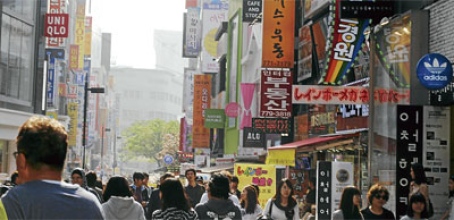Understanding Spices of life

Saemaul undong is still in progress and has significantly transformed the Korean economy
The fellowship is to further promote the network of RCEs in the Asia Pacific.
RCE, an initiative by the United Nations University-Institute of Advanced Studies (UNU-IAS), is headed by former IAS director Professor A.H. Zakri, who is Science Adviser to Prime Minister Datuk Seri Najib Razak.
The first group of seven pioneering RCEs was established in 2005, in conjunction with the declaration of the UN Decade on Education for Sustainable Development (DESD) (2005-2014). RCE in Penang, which was initiated by Universiti Sains Malaysia (USM), was recognised as the sole centre in Asean/Southeast Asia then.
As the concept of RCE caught on over time, more centres were established around the world after a review and vetting process by an international panel of Ubuntu Committee of Peers. The number of RCEs worldwide is now close to 100.
RCE is best described as a network of existing formal, non-formal and informal education organisations mobilised to deliver education for sustainable development (ESD) to local and regional communities.
A network of RCEs worldwide will constitute the Global Learning Space for Sustainable Development.
The RCEs aspire to achieve UN DESD goals by translating their global objectives into the context of local communities in which they operate while at the same time network with other parts of the world based on a common vision facilitated by the Global RCE Service Centre at UNU-IAS.
The four core elements of a RCE are to address: the issues of RCE management and leadership in the context of governance; the engagement of actors from all levels of formal, non-formal and informal education by promoting collaboration; the role of research and its inclusion in RCE activities, as well as to the design of strategies for collaborative activities, including those with other RCEs; and lastly, transformative education, namely, contribute to the transformation of the current education and training systems to satisfy ambitions of the region regarding sustainable living and livelihood.
As part of the Global Learning Space, RCE stakeholders include a variety of actors ranging from school teachers to professors at higher education institutions as well as researchers.
It also involves environmental non-governmental organisations, museums, zoos, botanical gardens, local government officials, representatives of local enterprises, volunteers, media, civic associations or individuals who work in the spheres of sustainable development such as economic growth, social development and environmental protection.
Collectively, they raise public awareness of the importance of educators and the essential role of ESD in attaining a sustainable future.
In addition, the long-term goals of ESD include environmental stewardship, social justice and improvement of the quality of life by designing an integrated sustainable development curricula and programmes tailored to address relevant issues within the local context of the community in which RCEs operate.
It is here where the term sejahtera, which, among others, means peaceful in Bahasa Malaysia, encapsulates many ideas since it is uniquely local and captures several essences of life -- spiritual, physical, intellectual, cultural, emotional, ecological psychological/mental (SPICES) -- in a nutshell.
A decade ago, USM adopted the philosophy of Kampus Sejahtera which integrates into the Global Learning Space.
The Kampus Sejahtera concept has now taken on a life of its own in shaping future mindset.
We note with pride that sejahtera has gained regional-international dimension and acceptance, especially by the Koreans, who are known to have successfully adopted saemaul undong -- a concept similar to gotong-royong -- as a movement to develop rural villages during the 1970s. Saemaul undong is still in progress and has significantly transformed the Korean economy.
Like gotong-royong, sejahtera is also a way of life underscored by strong collaborative spirit that pervades various levels of the community in achieving a harmonious shared vision.
It encourages the idea of reciprocity (orang berbudi, kita berbahasa) deeply rooted in the indigenous commitment and emphasises communal well-being based on mutual respect and responsibility.
With the wider global acceptance of the indigenous term sejahtera, we are better grounded to collectively create a sustainable world through an in-depth understanding of the "spices" of life in their multiple dimensions!
- The writer is vice chancellor of the Albukhary International University
